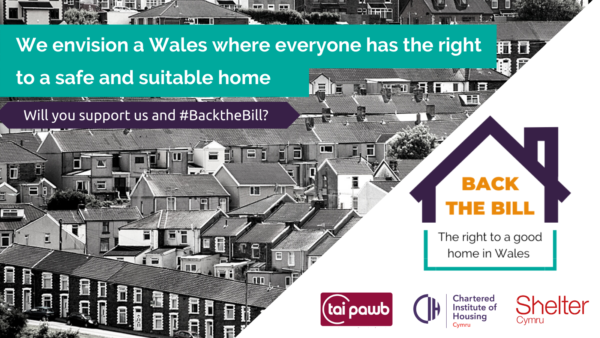Let’s start with first principles: housing is a fundamental human right. A right so central, so fundamental, that it intersects with all others. An inalienable and essential need enshrined in moral and natural law – though not yet in the statute books. Without it, all else suffers; educational outcomes fall, inequality worsens, psychological and physical health deteriorates, and human potential is capped and even drained. As Hashi Mohamed beautifully puts in his book A Home of One’s Own, having secure and dignified housing “allows the mind and soul to wander to more important matters; the growth of one’s personality, the ability to dream and desire.”1It is the basic human need for shelter, without which all other needs cannot be meaningfully met.
We have all seen the figures that illustrate the scale of the problem. Over 100,000 households now in temporary accommodation, 64,940 of those with children. As of the start of 2023, over 1.2 million households on local authority waiting lists, the true numbers of those in need likely far higher. And underlying these statistics, the daily human tragedies that flow endlessly from the national emergency that is the housing crisis.
As a councillor in an inner-city London borough I have come face-to-face with the desperation and devastation faced by those in desperate need, as well as the uncertainty and anxiety of young people with no hope of laying down roots. Like many of us, I have also personally faced the soul-destroying horror of housing insecurity and eviction – and the displacement that comes with it.
If we accept the truly destructive nature of the housing crisis across all metrics, and accept that housing is a human right, the next question surely must be: will we do whatever is necessary to fix it? Not for the sake of it, but because this is a matter of social and moral justice. Holding our principles front of mind and recognising that the housing crisis is not just a headline, we have no choice but to be bolder. Put simply, we as a Labour movement have an ethical, not just practical, duty to be fearless in our efforts.
Firstly, we have to slay some common myths on the progressive side of politics, namely that we can fix the housing crisis simply by filling vacant homes (whether they belong to overseas investors or not) and by building solely on brownfield sites in existing urban centres. I know why these are common arguments – I understand why they are attractive fantasies. We care deeply about inequality and reject the commodification of housing, recognising the unsustainability and immorality of the notion of homes lying vacant during a housing crisis, and we embrace our role as custodians of the environment, preferring to limit the impact of human existence on nature
But as is often the case, these fantasies are the waking dreams that risk distracting us from the real work required. The facts are sobering. The UK has the lowest long-term vacancy rate in Europe, bar Poland, at just 1.1% of the total housing stock– a mere drop in the water. Building to full capacity on all the brownfield sites in the entire country would only deliver 31% of the homes needed– a significant, but ultimately inadequate, amount.
While no option should be taken off the table, it is clear these approaches taken in isolation are not enough. Facing an estimated 4.3 million home deficit, only more radical, progressive solutions will end the injustice and suffering faced by so many.
Take the Green Belt, imagined by many as a noble, pristine ring embracing our cities while in fact acting as a semi-industrial chokehold throttling supply. Here we have an opportunity to make a radical, and observably true, argument – the Green Belt isn’t really green at all, and has very little to do with the environment. It does not exist to preserve England’s green and pleasant land but to restrict urban growth, and is already largely built upon with light industry and low-density housing. It is estimated we could fill the entire 4.3 million home gap by just building densely on under 6% of the Green Belt, if taken as the only solution. Counter-intuitively, this would then have the effect of limiting urban sprawl and allowing us to preserve and re-wild our actual natural landscapes.
Or we can look to the related work of architect Russell Curtis, whose research has concluded that we could provide 1.2 million homes by building solely around rural train stations, where the transport infrastructure already exists. The knock-on benefits of this for the economy and reducing reliance on cars are obvious, and would also require less new infrastructure to be built.
No argument about solving the housing crisis and fixing supply should ignore the need for wider planning reform, though, beyond re-designation of the Green Belt and other measures – as long as our planning regime operates on a case-by-case, discretionary model, as laid out in the Town and Country Planning Act 1947, achieving the levels of supply required may be prohibitively difficult. Our approach should therefore include a recognition of the need to overhaul the system as it currently stands and embrace the radicalism that makes us Labour: when systems are no longer fit for purpose, we build new ones.
When those outside the Labour movement, or our political opponents, make similar arguments about acting boldly to fix the housing crisis, they make them largely on the basis of practical and economic necessity. Our movement has the opportunity, and the responsibility, to make them with the moral necessity in mind and, while we do not have a monopoly on morality, we must remember the reason we exist – to redress these injustices.
It is why the Labour Housing Group and Labour Campaign for Human Rights came together to clearly say “Housing is a Human Right”, bringing together housing and human rights practitioners, and why our conference motion calls for housing to be front and centre of the party’s campaigns.
The housing crisis is a catastrophe affecting all strata of society; young people forced into HMOs and limiting environments well into their 30s, unable to flourish as they wish, millions more of all ages and backgrounds in insecure and undignified housing up and down the country, not to speak of the thousands experiencing street homelessness.
Failure to fix this problem – and failure to make this argument persuasively – is therefore a moral failure. The recognition that we must do whatever it takes to end the housing crisis should be at the front and centre of every debate, every political conversation, and every policy consideration: not simply to boost economic growth, or to attract younger voters, but because it is the right thing to do.

Omid Miri
Omid Miri has been a Councillor in Hammersmith & Fulham, and Chair of the Planning Committee, since May 2022. He is passionate about tackling the housing crisis and campaigning for housing as a human right, and particularly interested in re-prioritising social and council housing as a form of tenure.
- Labour’s London Assembly achievements and what winning a majority could mean
- From promises to delivery – making Labour’s housing goals a reality
- A Tenants’ Manifesto
- If Life is a Ladder, We are Letting 136,000 Young People Per Year Fall
- Tackling Temporary Accommodation: Labour Housing Group’s Recommendations










